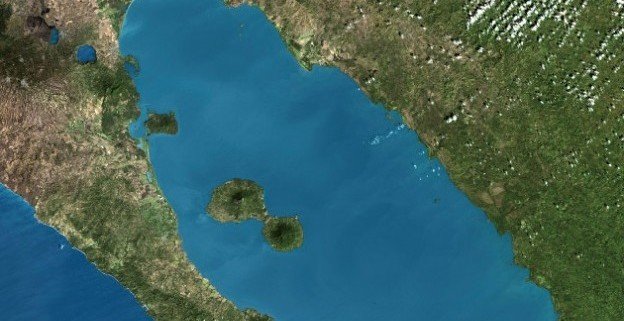News Roundup: The Nicaraguan Interoceanic Canal
As news of the Nicaraguan Interoceanic Canal begins to get more international attention, we know it can be difficult to keep up with every update. Between conflicting environmental reports, news of protests, and potentially positive indicators about the economy, there is much news to follow. And, soon we’ll have more information for you on how the canal is impacting CEPAD’s work in southern Nicaragua. We’ve already had to cease work in one village in Nueva Guinea because the people there were unwilling to work with outsiders after negative interactions with government employees related to the canal. As a non-political organization, CEPAD’s work does not directly address the canal, but we are aware of its impact on the people we work with.
Here, we’ve compiled 10 English-language articles that examine different political, environmental and cultural questions about the canal. We hope this will be a resource you can look to and share! As always, we’ll post major news about the canal and other events in Nicaragua on our Facebook page, and we look forward to having more information from the Nicaraguan government and HKND about the feasibility and environmental studies they have conducted, as well as official plans.
“The Comandante’s Canal,” The New Yorker, March 10, 2014
“The [constitutional] reforms overturned a constitutional stricture against foreign soldiers being garrisoned in Nicaragua, Téllez pointed out. “The Chinese must be throwing themselves a party right now,” she said. “Since the concession doesn’t specify geographical limits, it effectively gives them the whole country to do what they want. What do they have to pay in taxes? Nothing. What control does Nicaragua have? None.” Within the canal zone, the Chinese “will have the commercial interest and absolute control.” But, as Wang’s partner, Téllez said, Ortega could begin making profits in property speculation even before construction began. “The only reason Daniel Ortega would have signed the canal concession is if he is the real owner of the project. Because stupid he is not.”
“In Paradisical Nicaragua, Contemplating A Canal,” The New York Times, April 24, 2015
“As we headed back to Granada, Lorenzo asked me if I knew about the canal. I nodded.
“If it’s built,” he said, “the waters will go up and they will go down. But either way, we don’t know if we will be able to fish here like we do now.”
The canal project threatens not only Las Isletas’ residents, but also several of Nicaragua’s indigenous communities such as the Rama, Garifuna, Mayanga, Miskitu and Ulwa. The government maintains that the canal would provide an economic boost to a country sorely in need of one, where many earn $1 a day. The canal is expected to provide 25,000 jobs for Nicaraguans, HKND has said, and the Nicaraguan government projects that revenues could lift 400,000 people out of poverty in the next three years.”
“Nicaragua canal protest: Thousands oppose Atlantic-Pacific plan” The BBC, June 14, 2015
This photo essay demonstrates the public reaction from those who object to the canal.
“Nicaragua Canal Environmental Assessment Criticized As Scientifically Weak, Technically Inadequate” Circle of Blue, June 5, 2015
The quality of ERM’s data, though, and the accuracy of its conclusions about the potential harms from canal construction and operation, are not nearly as airtight as Nicaraguan authorities and HKND affirm. In March, ERM invited 15 environmental scientists and project experts to Miami to spend two days reviewing four chapters of the environmental assessment. In an 11-page evaluation obtained by Circle of Blue, the panel’s members concluded this spring that ERM’s environmental study is rife with significant flaws.
Circle of Blue also obtained a copy of ERM’s 16-page response to the special panel, which is the only portion of the 14-volume study that has been made public. In its response, ERM generally agreed with the weaknesses in the work that the panel illustrated and said that some analysis had been reworked.
Why The Plan To Build A Canal Across Nicaragua Could Be A Very Bad Idea, Wired, February 26, 2014
“The Nicaraguan government sees a huge opportunity in the project. Officials claim the canal will double the national economy, triple employment, and lift more than 400,000 people out of poverty by 2018.
So far the research that led to those numbers has not been made public, says Huete-Pérez. Nor has any assessment of the environmental impacts of the project.”
“Conservation: Canal Could Wreak Environmental Ruin” Nature, February 19, 2014
Scientific analysis of possible environmental affects of the canal.


